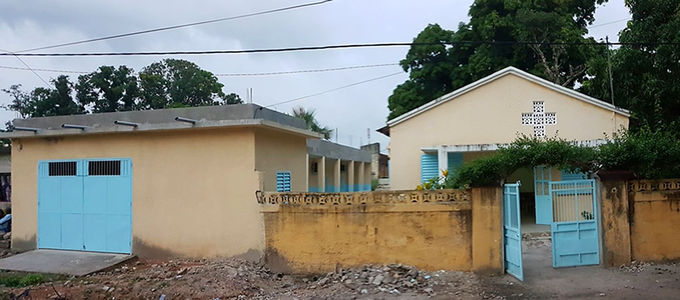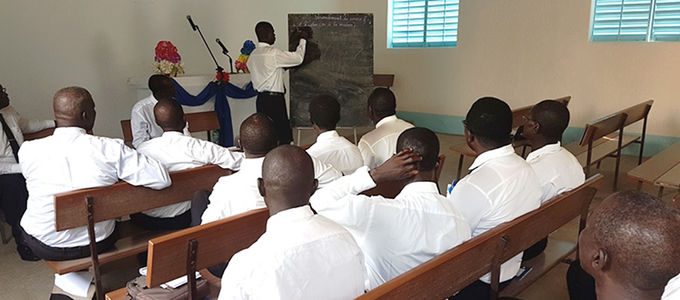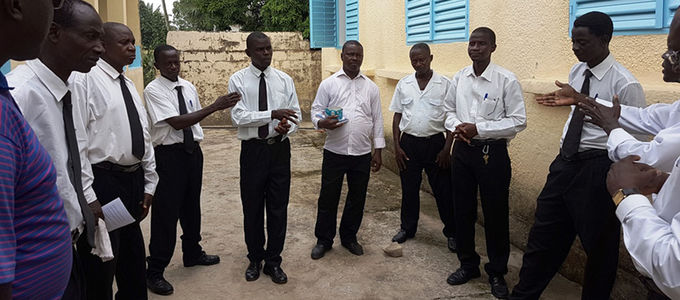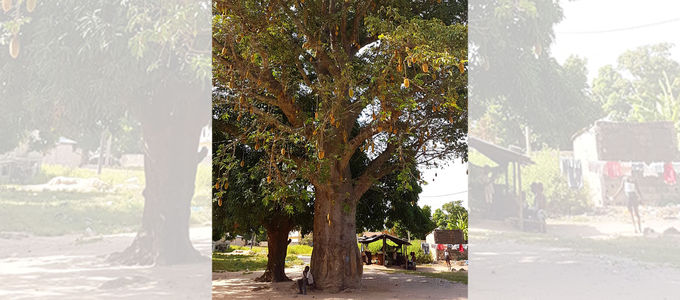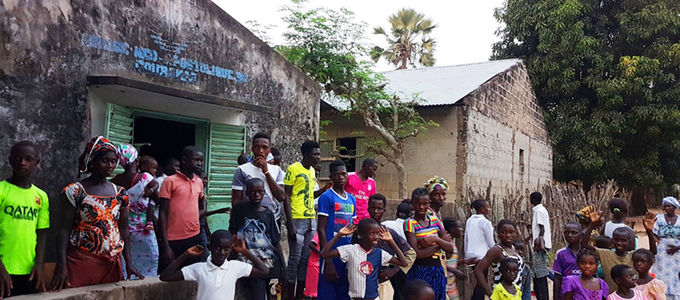
The region known as Casamance is the breadbasket of Senegal. Some 15,000 New Apostolic Christians live in this fertile region. When Chief Apostle Jean-Luc Schneider visits the city of Sédhiou in Casamance in February 2017, it will only be the second visit of a Chief Apostle to the country ever.
Senegal—a special country in West Africa, located at the westernmost point of the continent. About 14 million people live in this state, of which many understand French. It is one of a number of francophone countries in Africa.
Apostle Francisco Gomis is responsible for the pastoral care in the country. He is assisted by Apostle Gert Opdenplatz from Hesse in Germany, who has been supporting the work of the Church in Senegal since 1999. The approximately 15,000 New Apostolic Christians are spread over 210 congregations and are really looking forward to the impending visit of the Chief Apostle. The preparations began in earnest in October 2016 with the visit of Apostle Opdenplatz. In addition to various divine services, there were meetings for the ministers, seminars, and the inauguration of new Church offices. The Church in Senegal now even has its own website.
Religious tolerance
Casamance is a natural region in the south of Senegal. It is the area with the most New Apostolic congregations in the country. The river of the same name rises in the southern part of the country and flows west, some 300 kilometres through the Casamance region, and empties into the Atlantic Ocean. It creates ideal conditions for the cultivation of peanuts and cotton, which are important cash crops for the country.
More than 75 per cent of the Senegalese people profess Islam. Senegal is a secular state, meaning church and state are separate. This makes for a comparatively high tolerance of members of other faiths. About 15 per cent of the population in the Casamance region are Christian—something that goes back to migration and the distribution of ethnic groups. Whereas the country’s capital, Dakar, is populated mostly by Wolof people—there are only two congregations there—the Casamance region is inhabited mostly by the Diola and Malinke peoples.
New church buildings
Numerous church buildings have been constructed since the late 1970s. Even today, new churches are dedicated regularly. Their trip in October 2016 took the Apostles Gomis and Opdenplatz to two congregations, among others, about which Apostle Gomis reports the following: “Our members there built their church by themselves and without any financial help. The members pooled money to be able to buy building materials. Bricks were made and then baked, and craftsman erected a solid building. The plot had been placed at the congregation’s disposal by a brother.” Apostle Opdenplatz adds: “This is an expression of the members’ joyful faith. You can also feel it in the special atmosphere in the divine services and in their community spirit. The offerings remained stable despite the members building their own church. When I think of the many members and ministers in these countries I like to quote something the Chief Apostle said: ‘The work of God is wonderful. There is always somebody who is prepared to do more than you, and that under more difficult circumstances than your own.’”
Reopening of the administrative offices
While the Apostles visited numerous congregations, the Bishops Tounkang Mane and Pascal Strobel conducted seminars for the country’s district leaders, the topic being the conducting of funerals. The seminars were held in Ziguinchor, where the administrative offices of the New Apostolic Church in Senegal are. The offices had just been reopened after seven months of renovation. At the dedication ceremony, which was attended by the staff and the district leaders, there was a presentation on the history of the Church in the country, and a prayer was said asking for God’s help and protection.






